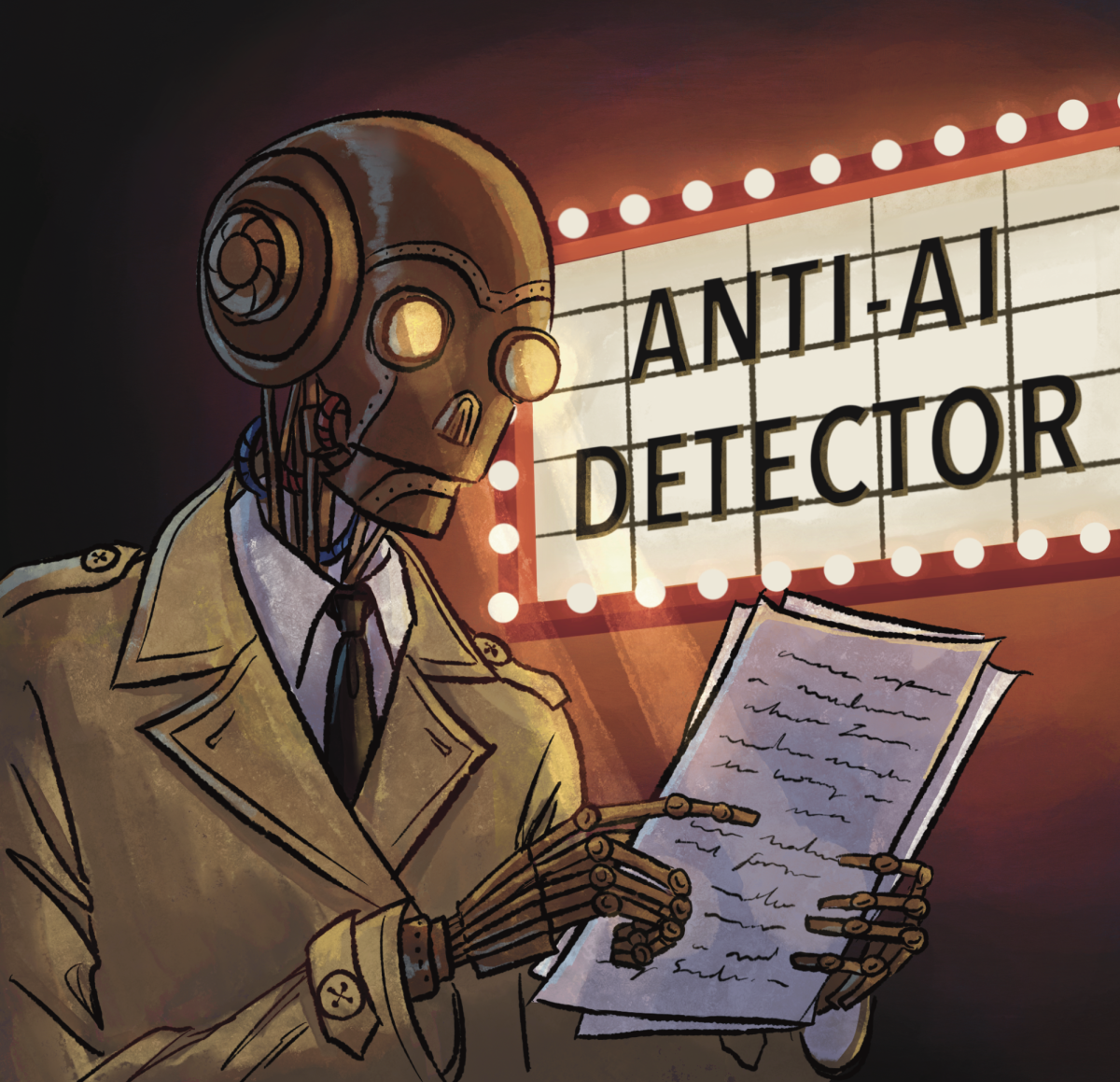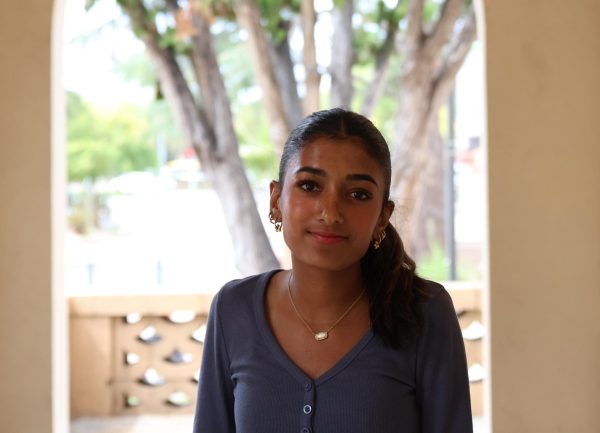As she sat at her desk for hours on end, she couldn’t come up with an answer to her English assignment. She thinks about writing an answer herself but doesn’t want to risk a bad grade. She could also go to PRIME and ask her teacher, but the assignment is due in a few hours. Instead, she turns to ChatGPT, a quick and easy fix to all her problems.
A female sophomore, who asked to remain anonymous because she doesn’t want others to know she cheated, said she has used ChatGPT to complete challenging parts of assignments and later faced the consequences of her actions as she was made to drop a letter grade.
“I was a little lazy, and I didn’t want to write it out myself, so I pasted the poem that I wrote into ChatGPT and asked, ‘What are the poetry devices used?’” she said.
In a 2023 study conducted by Study.com, 89% of over 1,000 students surveyed admitted to using ChatGPT to help with homework assignments while 53% of respondents said they used AI to write an essay. To help them identify students who are cheating, English teacher Lindsay Cohen said many teachers use AI detection programs like Draftback, Revision History and Turnitin, to ensure the work students turn in is their own. While the sites are reliable, Cohen said teachers are cognizant of a chance of error when reading reports.
“In some cases, (Revision History) is not perfect,” Cohen said. “You have to make sure you’re watching it, which is actually a mistake I made really early on because when I saw people pasting things, I just assumed it was plagiarism, but it’s not always the case.”
Cohen also said even if plagiarism is detected, she would first consult the student instead of immediately punishing them.
“If you see a bunch of pastes, I think it’s absolutely appropriate to have a conversation with a student before presuming a student is plagiarizing,” Cohen said.
Cohen said a spike in AI resources prompted teachers to start using measures to ensure the situation would not escalate and get out of hand.
“A lot of teachers downloaded software as soon as ChatGPT came out,” Cohen said. “In many cases, people are fearful of the unknown.”
Senior Alexandra Difede said errors made by AI detection platforms can have enduring consequences for students, and can negatively impact their experience in the classroom.
“AI checkers can be too much too fast because they can be wrong, and when they are, the effects can be more long-lasting than people think,” Difede said. “(AI detection programs) create a weird relationship between you and your teachers because they’re like, ‘Oh, you cheated here.’ It just creates a bit of distrust.’”
Teachers handle plagiarism accusations on a case-by-case basis. The anonymous sophomore said her teacher emailed her regarding the signs of plagiarism in her assignment.
“When I submitted the document to Schoology, (my teacher) sent an email saying this document had signs of copy and pasting,” she said. “I talked to her and she said, ‘If you have proof that you copy-pasted this text from somewhere else, I’d be more than willing to give you credit.’”
Cohen said using AI for inspiration is acceptable as long as students complete the rest of the process themselves.
“I don’t necessarily have any problem with a student being like, ‘Hey, I don’t know how to outline something,’ or ‘How do I integrate a quote effectively?’” Cohen said.
Having used ChatGPT herself, the anonymous sophomore said students have gotten better at hiding their use of AI programs.
“I think ChatGPT is getting out of hand,” she said. “I’ve seen kids ChatGPT their finals. It’s so hard to tell who wrote what and how much ChatGPT was used.”
To ensure students are not using AI unfairly, Cohen said students should follow their teachers’ instructions.
“I would say the best choice is to work on the document that the teacher provides,” Cohen said. “Having that ready to show your teacher and saying, ‘Hey, here’s my drafting process,’ mitigates any issues.”
But the anonymous student said it is easier to get around being caught by AI detection platforms when teachers explain how they work.
“The issue with our teacher is she told us exactly how it works, so there’s loopholes you can (jump through),” she said. “It doesn’t actually show what’s ChatGPT or not. It shows your process of editing the document, and what you typed when you copy-pasted.”
Difede said with the development of technology, AI detection platforms may be the most effective way to prevent students from plagiarizing.
“Other than having your students completely write an essay in class, which can be even more stressful and not let the students show their best work, I think AI checkers are the best option right now,” Difede said.
Despite being punished for using ChatGPT, the anonymous student said AI checkers do more good than harm as they assist in the development of student’s writing skills.
“In the long run, (AI checkers) will be better for students because instead of using ChatGPT, they are actually doing it themselves and learning more,” the anonymous student said. “If they continue to use ChatGPT, that ends up hurting themself and stunting their growth in terms of writing and English.”



Darius Bacani • Jan 3, 2025 at 4:16 am
In my experience, using AI may help us with our job more efficiently, but you should check it before you finalize your article.